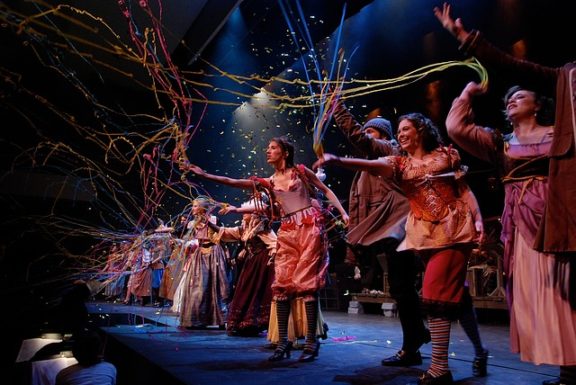
April 6, 2017; Crain’s Chicago Business
Writing for Crain’s Chicago Business, Danielle Braff details the donor perks you might see as a patron of the cultural scene, and…well…they could keep you very busy.
Much of what she describes is a kind of insider status—access to the talented folk that make and curate the magic, sometimes in processes that allow dedicated donors to become a part of the milieu.
- If you give very generously to the Lincoln Park Zoo, it might take you to Tanzania through the Serengeti Health Initiative and other wildlife projects.
- The Goodman Theater offers not only opening-night tickets for donating at least $5,000 but also opportunities to hang with the stars at their cast parties following those opening nights. Every other year, Goodman takes a group to London, where you get a “curated experience” that includes access to theaters, stars, and critics. A collaboration with Cuba’s Teatro Buendia resulted in Goodman donors taking a trip to Cuba for a similar set of activities.
- Donating to Chicago Shakespeare Theater may result in an invitation to jet to Scotland to watch the Edinburgh Fringe Festival figure out which shows to program. Braff writes, “You have open access in the development and production process. Once you become a five- or six-figure donor, you get to be completely behind the scenes, from scouting productions to attending rehearsals to watching what it takes to get the show to its first night Steppenwolf Theatre.”
As an Adler Planetarium donor of $10,000 or more, you may be tendered an invitation to a solar eclipse in China. Supporting the Grant Park Music Festival for $25,000 or more may land you a private dinner with maestro Carlos Kalmar. And, at the famed Chicago Symphony Orchestra you might “fly with the musicians when they go on tour to some of the world’s major capitals, like Tokyo, Moscow or Rome.”
Sign up for our free newsletters
Subscribe to NPQ's newsletters to have our top stories delivered directly to your inbox.
By signing up, you agree to our privacy policy and terms of use, and to receive messages from NPQ and our partners.
On these trips (which range from $4,500 to $18,000 per person), you’ll do more than dine with the musicians before and after concerts, though there will be lots of meals with them and maestro Riccardo Muti. You’ll also get to do things like take a private tour of Cremona, Italy, where famous violin makers like Stradivari and Guarneri lived and worked, says Eileen Chambers, CSO spokeswoman.
Other perks happen closer to home, says Jamey Fadim, a life trustee who recently enjoyed watching CSO principal oboist Alex Klein give a semiprivate performance during a trustee meeting. Fadim says he loves getting to know the musicians. “The things that don’t cost the symphony any money are the ability to go backstage and talk to the musicians, to go into the music director’s dressing room and to speak with him or her—to me that access to the behind-the-scenes activities is what’s special as a trustee,” he says.
While Braff mixes the experience of donors with the experiences of trustees and fails to be super-clear in every case about what each will cost you beyond the donation made, the article provides a sense of the deep engagement offered to donors. As examples of retention processes, they are worth knowing. Not all of us would take large donors on overseas trips, of course, but we might consider where would they like to be invited. What might you do to ensure that your donors of money and time feel a valued and integrated part of your scene?—Ruth McCambridge















